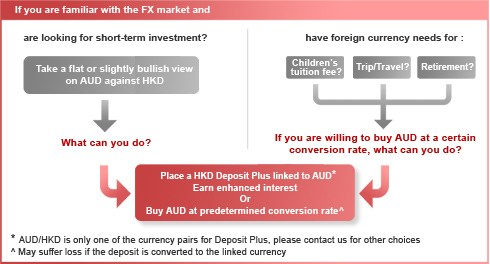How to protect your investments from currency risk
Post on: 10 Июль, 2015 No Comment

3 Investment Strategies to Protect Your Money From Stock Market Drops
3 Investment Strategies to Protect
3 Investment Strategies to Protect Your Money From Stock Market Drops
3 Investment Formations to Protect you From Scary Stock Markets-LIKE THIS ONE! Although there are many ways to protect your cash from an unexpected event in the equity and bond markets, I would highly.
WARNING! YouTube Scammer Alert! Protect Your Money, Investments and Stack!
WARNING! YouTube Scammer Alert! Protect Your Money, Investments and Stack!
Protecting Your Money in a Declining Economy
Tangible assets protect you against currency collapse
Protect Yourself (and Make Money) From a Greek Exit
The Power of Hedging Your Portfolio With Currency Investments
How To Spot a Real Forex Trend and Protect Your Investment Against Market Volatility 2014
Bill McNabb and Tim Buckley on international investing and your portfolio
Silver and Precious Metals Investing 101 Part 1
Gold IRA Rollover Facts: Learn Exactly How to a Gold IRA Rollover Works !
Part 2 Silver and Precious Metals Investing 101
RRSP Investments: Brad MacBeth on RRSP Investing
Early currency [link]
Currency evolved from two basic innovations, both of which had occurred by 2000 BC. Originally money was a form of receipt, representing grain stored in temple granaries in Sumer in ancient Mesopotamia. then Ancient Egypt .
This first stage of currency, where metals were used to represent stored value, and symbols to represent commodities, formed the basis of trade in the Fertile Crescent for over 1500 years. However, the collapse of the Near Eastern trading system pointed to a flaw: in an era where there was no place that was safe to store value, the value of a circulating medium could only be as sound as the forces that defended that store. Trade could only reach as far as the credibility of that military. By the late Bronze Age. however, a series of international treaties had established safe passage for merchants around the Eastern Mediterranean, spreading from Minoan Crete and Mycenae in the northwest to Elam and Bahrain in the southeast. Although it is not known what functioned as a currency to facilitate these exchanges, it is thought that ox-hide shaped ingots of copper, produced in Cyprus may have functioned as a currency. It is thought that the increase in piracy and raiding associated with the Bronze Age collapse. possibly produced by the Peoples of the Sea. brought this trading system to an end. It was only with the recovery of Phoenician trade in the ninth and tenth centuries BC that saw a return to prosperity, and the appearance of real coinage, possibly first in Anatolia with Croesus of Lydia and subsequently with the Greeks and Persians. In Africa many forms of value store have been used including beads, ingots, ivory. various forms of weapons, livestock, the manilla currency. ochre and other earth oxides, and so on. The manilla rings of West Africa were one of the currencies used from the 15th century onwards to buy and sell slaves. African currency is still notable for its variety, and in many places various forms of barter still apply.
Coinage [link]
Main article: Coin
These factors led to the shift of the store of value being the metal itself: at first silver, then both silver and gold, at one point there was bronze as well. Now we have copper coins and other non-precious metals as coins. Metals were mined, weighed, and stamped into coins. This was to assure the individual taking the coin that he was getting a certain known weight of precious metal. Coins could be counterfeited, but they also created a new unit of account. which helped lead to banking. Archimedes’ principle provided the next link: coins could now be easily tested for their fine weight of metal, and thus the value of a coin could be determined, even if it had been shaved, debased or otherwise tampered with (see Numismatics ).
In most major economies using coinage, copper, silver and gold formed three tiers of coins. Gold coins were used for large purchases, payment of the military and backing of state activities. Silver coins were used for midsized transactions, and as a unit of account for taxes, dues, contracts and fealty, while copper coins represented the coinage of common transaction. This system had been used in ancient India since the time of the Mahajanapadas. In Europe, this system worked through the medieval period because there was virtually no new gold, silver or copper introduced through mining or conquest. [ citation needed ] Thus the overall ratios of the three coinages remained roughly equivalent.
Paper money [link]
In premodern China. the need for credit and for circulating a medium that was less of a burden than exchanging thousands of copper coins led to the introduction of paper money. commonly known today as banknotes. This economic phenomenon was a slow and gradual process that took place from the late Tang Dynasty (618–907) into the Song Dynasty (960–1279). It began as a means for merchants to exchange heavy coinage for receipts of deposit issued as promissory notes from shops of wholesalers. notes that were valid for temporary use in a small regional territory. In the 10th century, the Song Dynasty government began circulating these notes amongst the traders in their monopolized salt industry. The Song government granted several shops the sole right to issue banknotes, and in the early 12th century the government finally took over these shops to produce state-issued currency. Yet the banknotes issued were still regionally valid and temporary; it was not until the mid 13th century that a standard and uniform government issue of paper money was made into an acceptable nationwide currency. The already widespread methods of woodblock printing and then Pi Sheng ‘s movable type printing by the 11th century was the impetus for the massive production of paper money in premodern China.














